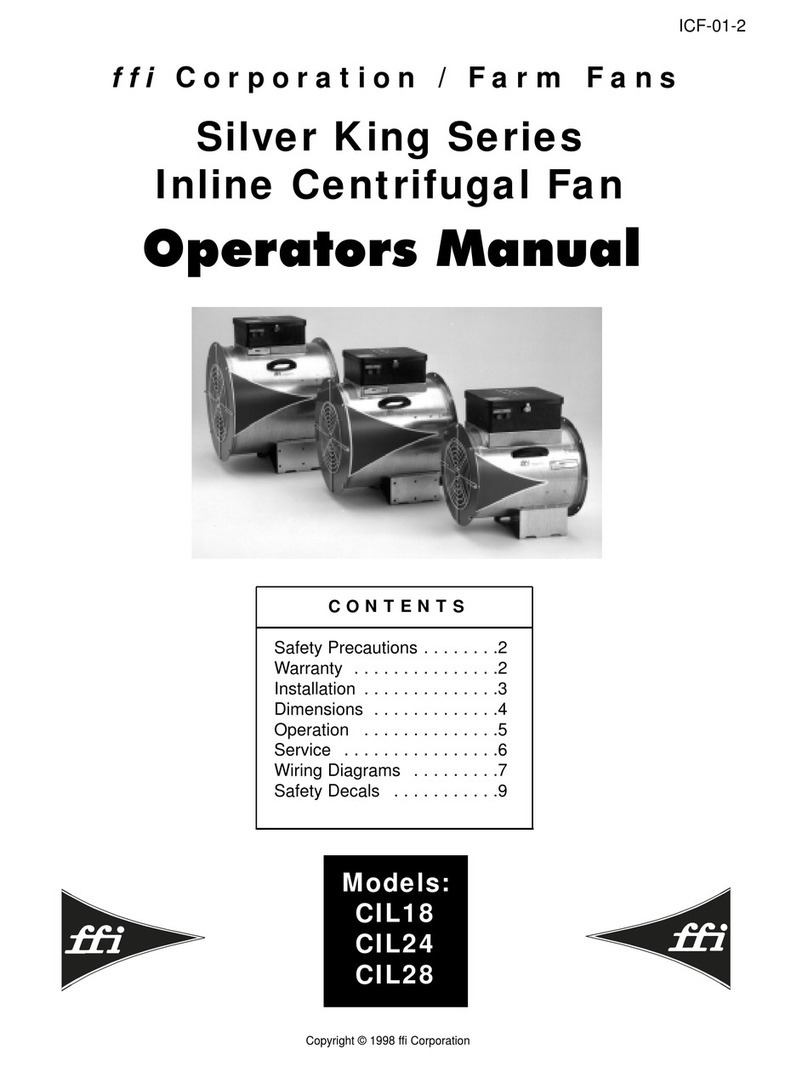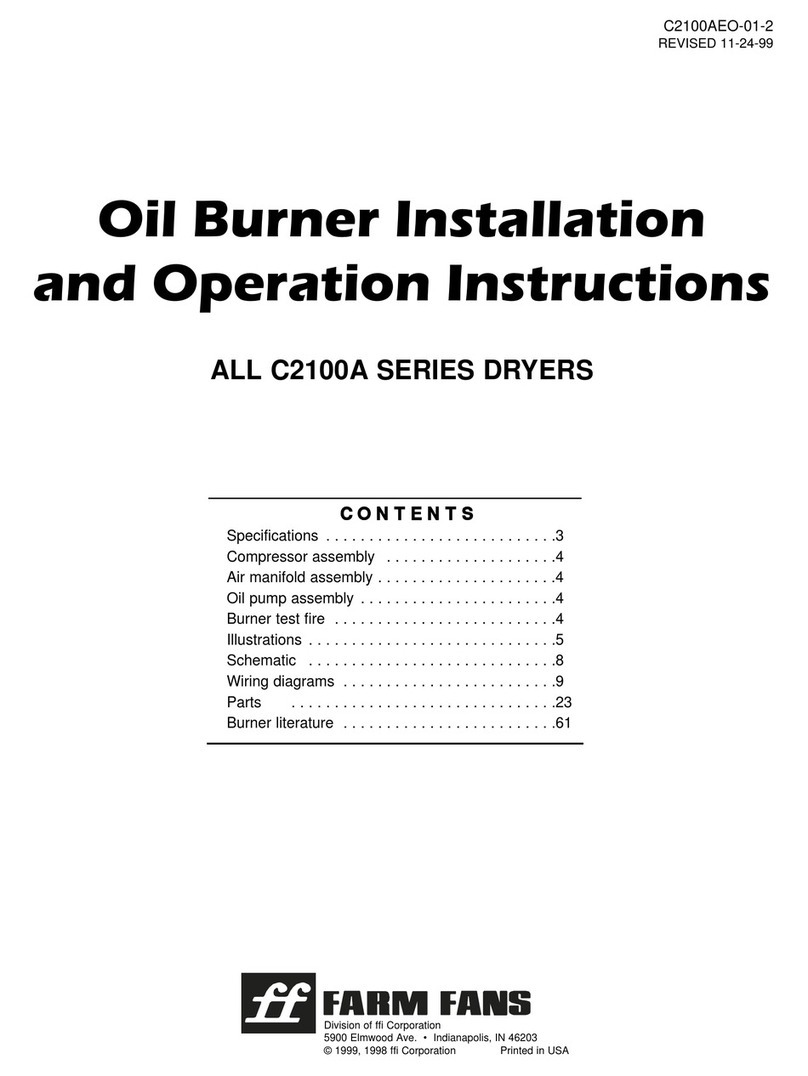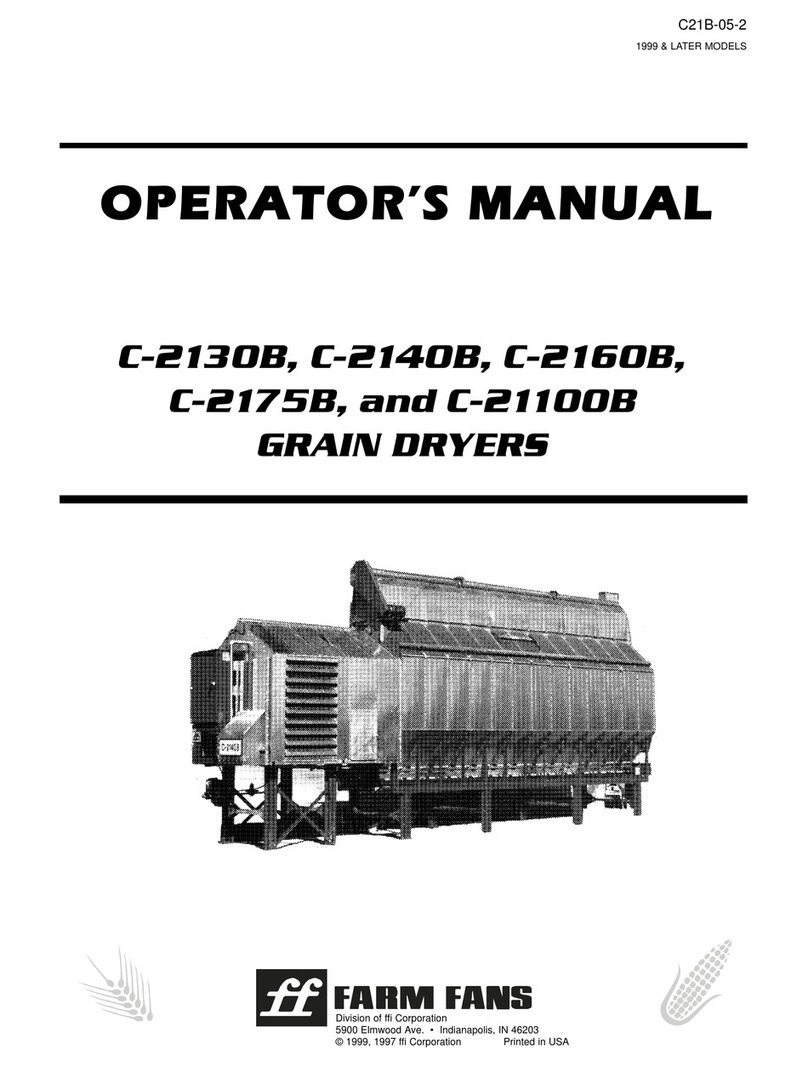
CONTENTS
OPERATING
PRECAUTIONS
.................
ii Dryer Shutdown
...............................
5·2
Operating Instructions Chart
......................
5·3
Drying Time
Table·
C·2125A (Fig. 5·1)
..............
5·3
Drying Time
Table·
C·2130A & C·2140A (Fig. 5·2)
.....
5·4
SECTIONONE
SREGIHIGA'mI0NS"
Start·up Procedure (Fig. 5·3)
......................
5·5
C·2125A Continuous Flow Operation (Fig. 5·4)
.........
5·6
General Specs . . . . . . . . . . . . . . . . . . . . . . . . . . . . . .
1·1
Spec Chart
.................................
1·2 C·2130A Continuous Flow Operation (Fig. 5·5)
.........
5·7
C·2140A Continuous Flow Operation (Fig. 5·6)
.........
5·8
Auger Specs
...............................
1·3
SCR Specs
................................
1·6
SECTlON$lX
DRYER
1l.[l.[USTRA'mI0NS
SECTIONlWO
mRA'NSR0RmAmI0N
&
INSTAl.[l.[A'mI0N
TRANSPORTING DRYER
........................
2·1
SECTIONSEVEN
SERYIGE
INSTALLATION
...............................
2·1
FUEL CONNECTION
...........................
2·3 Seasonal Inspection and Service
...................
7·1
ELECTRICAL POWER SUPPLY
...................
2·5 Burner Control Sequence of Operation
...............
7·2
Propane Vaporizer Seasonal Inspection
..............
7·3
Vaporizer Adjustment
...........................
7·3
Fan Propeller Removal and Installation
..............
7·4
SECTIONllIREE
0RERAmiNG
G0NTR0l.[S. Browning Taper·lock Bushing Bolt Tightening Torques . 7·6
Fan Motor Removal and Installation
.................
7·6
Control Stop/Start . . . . . . . . . . . . . . . . . . . . . . . . . . . . . .
3·1
Fan Switches
.................................
3·1
Main/Safety Gas Shut·Off Valve
...................
3·1
Burner Switches
...............................
3·1
Plenum Temperature Controls
.....................
3·2
Load Auger Switch
.........
. . . . . . . . . . . . . . . . . . . . 3·3
Load (Top Auger) Timer
.........................
3·3
Unload Auger Switch
...........................
3·3
Heater Parts Removal and Installation
...............
7·7
Grain and Plenum Temperature Sensor Locations
......
7·8
SCR Drive and Meter Roll Information
...............
7·9
Meter Roll Blockage
............................
7·9
How To Determine Metering Problem
............
7·10
To Locate The Jam
.........................
7·10
To Clear Jam From Meter Roll
.................
7·10
SCR Motor Control
............................
7·10
Meter Roll Controls
.............................
3·4
Meter Roll Selector Switch
......................
3·4
Manual Unload Control Dial
....................
3·4 SECTION EIGHT
WIRING
DIAGRAMS
% Unload Rate (Meter Roll) Volt Meter
.............
3·4
Vari·Trol Moisture Control
........................
3·4
Operating with Moisture Control
..................
3·5
Dryer Operator Light
............................
3·5
Hour Meter . . . . . . . . . . . . . . . . . . . . . . . . . . . . . . . .
...
3·5
Meter Roll Monitor System
......................
3·5
Shutdown Indicators
............................
3·6
Power
Circuit·
230V
141
C·2125A models
............
8·1
Power
Circuit·
all
3q,
models
......................
8·2
General Control Circuit (2 pages)
.............
8·3 to 8·4
Safety Shutdown Circuit
.........................
8·5
PL·021 Burner Control Circuit
.....................
8·6
Restarting Dryer after a Shutdown
................
3·7
Hinged Fast·Trip Cleanout
.......................
3·6
SEC'nONNINE TROUBl.[ESH00TING
SECTION FOUR
TEST
HIRING
SECTION
AVE
DRYER
ORERATI0N
Drying Temperatures
...........................
5·1
Full Heat Drying
...............................
5·1
Final Moisture Content
..........................
5·1






























